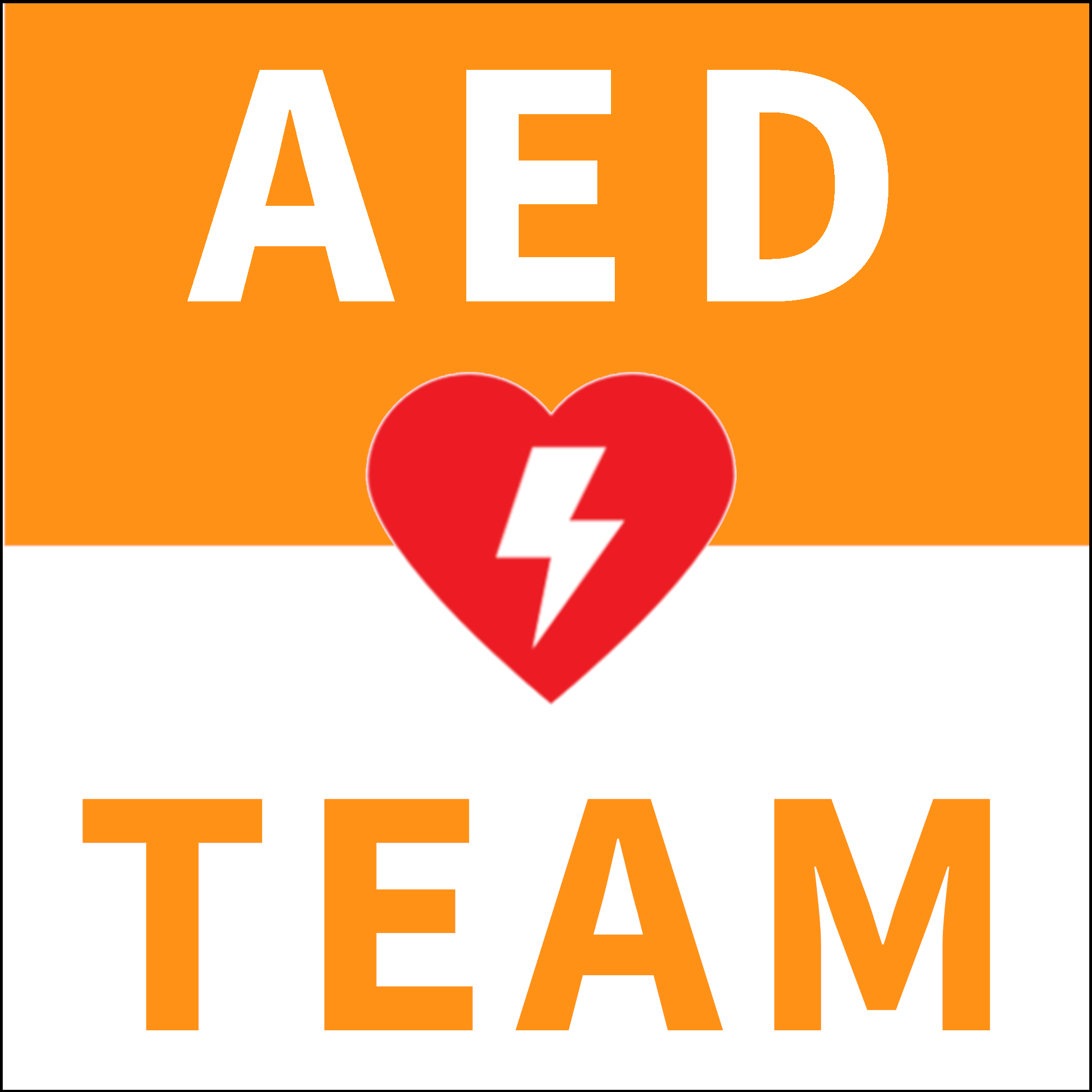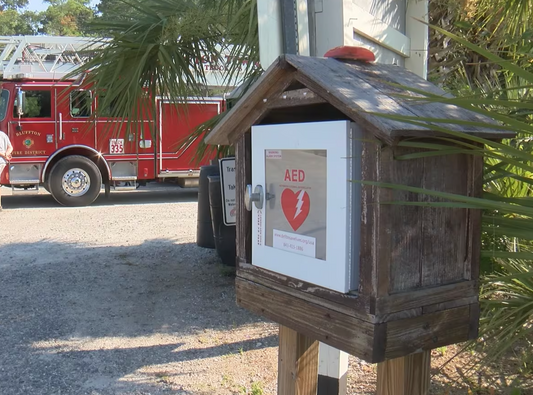Automated External Defibrillators (AEDs) are valuable devices that can provide a patient with the best chance of survival. The time from Collapse-To-Defibrillation is one of the key determinants between life and death for out of hospital cardiac arrest patients.
Throughout your daily activities, you may notice AEDs placed in various public settings. These devices are placed in populated areas such as Shopping Malls, Movie Theatres, Schools, Supermarkets, and Local Parks. The intention is to place these AEDs in high volume locations with the goal of delivering a shock to a patient as soon as possible in a Cardiac Arrest emergency.
Typically, AEDs are mounted in approved compartments in highly visible locations. You may notice that most AEDs also include an accessory kit or pouch. This accessory kit will either be in the compartment next to the AED or physically attached to the AED device. While not a rule, we recommend having the AED accessory kit connected directly to the AED to ensure that you have these valuable items with you wherever the AED goes.
While the contents may vary, below is a list of recommended items to include when assembling your AED accessory kit:
Disposable Razor-To allow you to shave excessive hair off the victim’s chest. This will make it easier to attach the Electrode Pads to the victim’s chest.
Towel- To wipe any water, sweat, or perspiration off the victim’s chest.
Disposable Gloves- To provide Infection Control protection for you and your patient.
Pocket Mask or Face Shield Barrier Device- Another useful resource to provide Infection Control protection for you and your patient while breaths are given.
Electrode Pads- It is a good practice to have extra sets of AED electrode pads available. We recommend having both Adult and Child size pads available.
When preparing for an emergency, we need to have a proactive rather than a reactive approach. Consider all the possibilities and plan accordingly. Ensure that your AED is operational and make sure that your AED accessory kit is stocked. These simple, routine inspections will ensure that your AED is ready at a moment’s notice and will dramatically improve a victim’s chances of survival.




